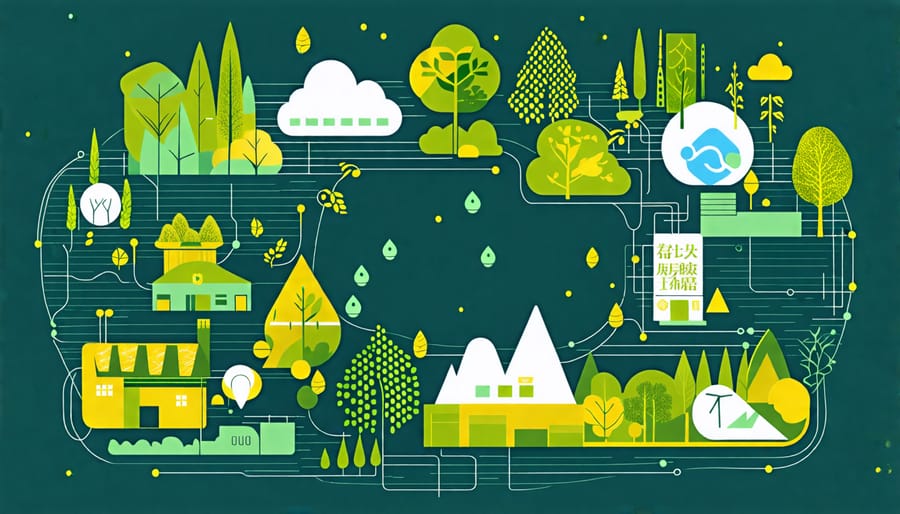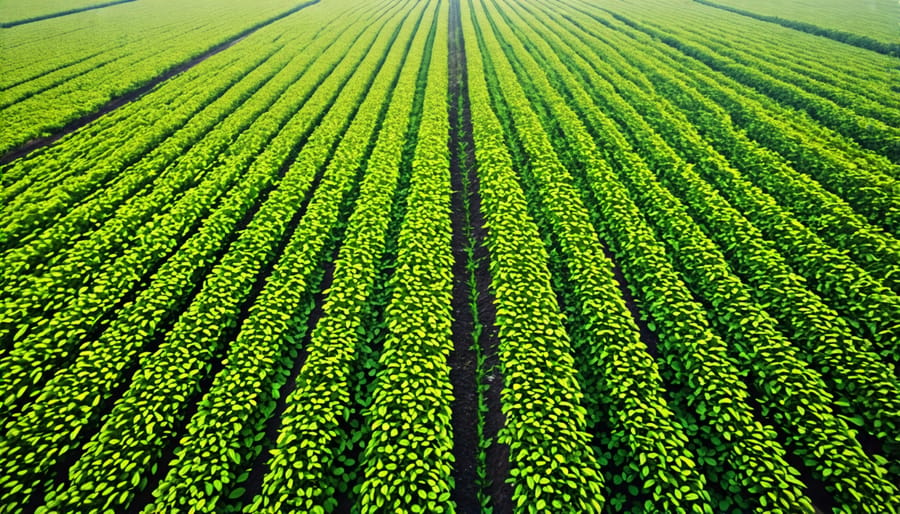As the world grapples with climate change and the urgent need for sustainable energy solutions, biomass emerges as a potential game-changer. Derived from organic matter like plants and agricultural waste, biomass offers a renewable alternative to fossil fuels. However, as we explore this promising energy source, it’s crucial to understand its environmental impact. From carbon neutrality to land use implications, the story of biomass is complex and nuanced. In this article, we’ll dive deep into the ecological footprint of biomass, examining both its benefits and challenges. By understanding the full picture, we can make informed decisions about how to harness the power of biomass while minimizing any unintended consequences. Join us as we unravel the environmental impact of this intriguing renewable energy source and discover why biomass is a promising renewable energy source for a sustainable future.
Understanding Biomass Energy
What is Biomass?
Biomass is a renewable organic material derived from living or recently living organisms, such as plants, trees, and agricultural waste. In the context of energy production, biomass refers to plant-based materials that can be burned or converted into biofuels to generate electricity, heat, or transportation fuels. Common examples of biomass resources include wood, crop residues, animal manure, and municipal solid waste. The process of converting these materials into usable energy is known as biomass energy or bioenergy.
Biomass is considered a renewable energy source because the plants or organic matter used can be replenished relatively quickly, often within a human lifetime. Unlike fossil fuels, which take millions of years to form, biomass can be sustainably harvested and regrown, making it a viable alternative for reducing greenhouse gas emissions and combating climate change. When managed responsibly, biomass has the potential to play a significant role in Australia’s transition to a cleaner, more sustainable energy future.
Converting Biomass to Energy
Converting biomass into usable energy involves several processes, depending on the type of biomass and desired end product. One common method is direct combustion, where biomass is burned to generate heat or electricity. This can be done in power plants or combined heat and power (CHP) systems. Another approach is gasification, which converts biomass into a combustible gas that can be used in engines or turbines. Pyrolysis is a process that heats biomass in the absence of oxygen, producing bio-oil, syngas, and biochar. Fermentation is used to convert biomass into ethanol or other biofuels, while anaerobic digestion breaks down organic matter to create biogas. These processes offer a range of options for harnessing the energy potential of biomass, making it a versatile renewable resource that can help reduce our reliance on fossil fuels and contribute to a more sustainable future.
Types of Biomass Fuels
Biomass fuels encompass a wide array of organic materials derived from plants and animals. In Australia, common biomass sources include agricultural residues like sugarcane bagasse and wheat straw, forestry byproducts such as wood chips and sawdust, and dedicated energy crops like switchgrass and miscanthus. Municipal solid waste, including food scraps and paper products, can also be converted into biomass fuels. Animal manure and sewage sludge are additional various biomass sources that can be utilized for energy production. By harnessing these diverse feedstocks, biomass has the potential to significantly contribute to Australia’s renewable energy mix while reducing waste and greenhouse gas emissions.

Environmental Benefits of Biomass Energy
Reduced Carbon Footprint
Biomass is often considered a carbon-neutral energy source because the carbon dioxide absorbed by plants during their growth offsets the emissions released when biomass is burned for energy. Unlike fossil fuels, which introduce ancient carbon back into the atmosphere, biomass recycles carbon from the present-day carbon cycle. This closed-loop system helps reduce carbon emissions and mitigate climate change.
When managed sustainably, biomass crops can act as carbon sinks, removing CO2 from the atmosphere and storing it in plant material and soil. By replacing fossil fuels with biomass energy, we can significantly decrease our reliance on non-renewable resources and cut greenhouse gas emissions. However, it’s crucial to ensure that biomass production does not lead to deforestation or compete with food production, as this could negate its environmental benefits.
Australia has vast potential for sustainable biomass production, with abundant agricultural and forestry waste that can be converted into clean energy. By embracing biomass as part of a diverse renewable energy mix, we can work towards a more sustainable future and combat the pressing issue of climate change.

Renewable and Sustainable
Biomass is a renewable energy source derived from organic matter that can be replenished over time. Unlike finite fossil fuels, biomass resources such as crops, trees, and agricultural waste can be sustainably managed and regrown. This renewable nature makes biomass an attractive alternative for reducing reliance on non-renewable energy sources and mitigating greenhouse gas emissions.
When sourced responsibly, biomass can be part of a circular economy where the carbon released during energy production is reabsorbed by growing plants. This cycle helps to maintain a balance in atmospheric carbon levels. Additionally, using biomass residues and wastes for energy production can minimize the environmental impact of these materials and prevent them from ending up in landfills.
However, it’s crucial to ensure that biomass resources are managed sustainably to maximize their environmental benefits. This involves implementing best practices in agriculture, forestry, and waste management to avoid negative impacts on ecosystems and biodiversity. With proper planning and oversight, biomass can play a significant role in Australia’s transition to a more sustainable energy future.
Waste Reduction
Biomass energy not only harnesses renewable resources but also helps reduce waste that would otherwise end up in landfills. By utilizing agricultural residues, forestry byproducts, and even municipal solid waste, bioenergy plants give new life to materials that are often discarded. This waste-to-energy approach minimizes the strain on landfills, reducing greenhouse gas emissions like methane that occur when organic matter decomposes.
In Australia, innovative projects are transforming waste into valuable energy. For example, sugarcane bagasse, a fibrous residue from sugar production, is being used to generate electricity and heat in Queensland’s sugar mills. This process not only powers the mills themselves but also feeds excess energy back into the grid, benefiting local communities. By embracing waste reduction through biomass, we can create a more sustainable future where nothing goes to waste and clean energy prevails.
Potential Drawbacks and Considerations
Land Use and Biodiversity
Growing biomass crops can have both positive and negative impacts on land use and biodiversity. On one hand, dedicating land to bioenergy production can reduce reliance on fossil fuels and help combat climate change, which is a major threat to ecosystems worldwide. Biomass crops can also be grown on marginal or degraded land, potentially restoring soil health and providing habitat for wildlife.
However, if not managed carefully, large-scale biomass production could lead to land use changes that harm biodiversity. Converting natural habitats like forests or grasslands into biomass plantations can disrupt ecosystems and displace native species. Monoculture crops grown intensively may also reduce biodiversity compared to more diverse natural vegetation.
To minimize negative impacts, it’s crucial to implement sustainable land management practices when growing biomass. This can include integrating biomass crops with other land uses, such as agroforestry systems that combine trees with crops or livestock. Choosing native or non-invasive species, practicing crop rotation, and maintaining wildlife corridors can also help protect biodiversity.
Ultimately, the environmental impact of biomass on land use and biodiversity depends on factors like the scale of production, the specific crops grown, and the methods used. With careful planning and responsible management, biomass has the potential to be a sustainable energy solution that works in harmony with nature.
Air Pollution
While biomass is a renewable energy source, its combustion can lead to air pollution if not managed properly. Burning biomass releases particulate matter, nitrogen oxides, and other emissions that can impact local air quality. However, modern biomass facilities employ advanced technologies to minimize these emissions, such as scrubbers and filters. Compared to fossil fuels, biomass combustion releases lower levels of sulfur dioxide and mercury. Additionally, using biomass waste materials for energy production can reduce the air pollution associated with open burning or landfill decomposition. Sustainable biomass harvesting practices and efficient combustion technologies are key to maximizing the air quality benefits of bioenergy. As Australia continues to develop its biomass sector, prioritizing clean-burning systems and responsible feedstock sourcing will be essential for maintaining healthy air quality while transitioning to renewable energy sources.

Sustainable Sourcing
Sustainable sourcing is a critical aspect of biomass energy production. To minimize environmental impact, it’s essential to prioritize responsibly managing biomass resources and avoid contributing to deforestation or habitat loss. By focusing on waste materials, such as agricultural residues, forestry by-products, and urban green waste, we can harness bioenergy without compromising ecosystems. Implementing best practices like selective harvesting, replanting, and soil conservation helps maintain the long-term health of our biomass sources. Additionally, supporting local biomass production reduces transportation emissions and boosts regional economies. With a commitment to sustainable sourcing, Australia can lead the way in demonstrating how bioenergy can be a truly eco-friendly solution. By working closely with landowners, farmers, and communities, we can ensure that our biomass supply chains are not only economically viable but also environmentally responsible, protecting our precious natural resources for generations to come.
In conclusion, biomass energy offers a promising path towards a more sustainable future for Australia when managed responsibly. By harnessing the power of organic materials, we can reduce our reliance on fossil fuels and decrease greenhouse gas emissions. Biomass not only provides a renewable source of electricity and heat but also supports the growth of local economies through job creation and the utilization of agricultural and forestry waste.
However, it is crucial to approach biomass energy with a holistic perspective, considering factors such as land use, biodiversity conservation, and efficient resource management. By implementing best practices and adhering to sustainability guidelines, we can maximize the environmental benefits of biomass while minimizing potential drawbacks.
As Australia continues to explore and invest in renewable energy solutions, biomass has the potential to play a significant role in our transition to a cleaner, greener future. By embracing this valuable resource and promoting responsible management, we can create a more resilient and environmentally friendly energy landscape for generations to come. The journey towards sustainability is an ongoing process, but with the right approach and commitment, biomass energy can be a key component in Australia’s efforts to combat climate change and build a thriving, low-carbon economy.

